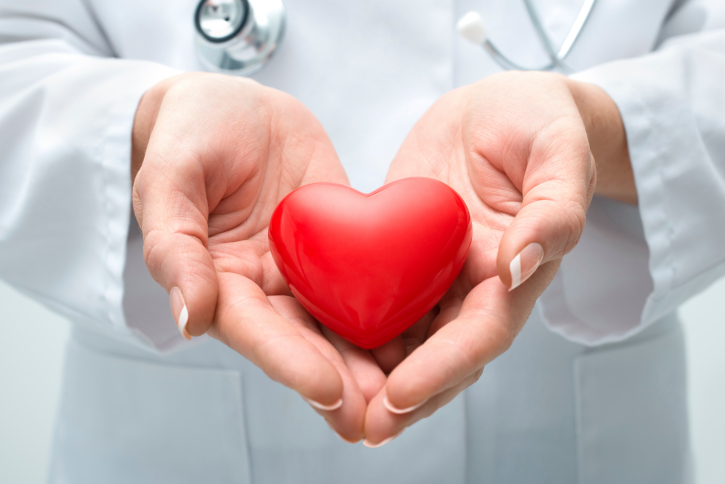Introduction
Heart disease has long been considered a men’s issue, but the truth is that it’s the leading cause of death among women worldwide. The way heart disease affects women — from risk factors to symptoms — often differs significantly from men. Unfortunately, these differences can lead to delayed diagnosis and treatment.
Understanding the unique risks and symptoms of heart disease in women is crucial for early prevention, better care, and longer, healthier lives.
Understanding Heart Disease in Women
1. How Heart Disease Affects Women Differently
Heart disease occurs when blood flow to the heart is reduced or blocked due to plaque buildup in the arteries. While both men and women experience this, the pattern of disease progression differs.
- Women often develop heart disease in smaller arteries that supply blood to the heart (microvascular disease).
- Symptoms in women can be more subtle and non-traditional, leading to missed or delayed diagnosis.
- Hormonal changes — especially after menopause — play a major role in women’s heart health.
Unique Risk Factors for Heart Disease in Women
1. Hormonal Changes and Menopause
Estrogen has a protective effect on the heart by maintaining healthy cholesterol levels and blood vessel flexibility. After menopause, estrogen levels decline, increasing the risk of:
- High blood pressure
- High LDL (“bad”) cholesterol
- Arterial stiffness and plaque buildup
2. Pregnancy-Related Complications
Certain pregnancy conditions can signal a higher risk of heart disease later in life, including:
- Preeclampsia (high blood pressure during pregnancy)
- Gestational diabetes
- Preterm delivery or low-birth-weight babies
Women who experience these complications should have their heart health monitored regularly.
3. Autoimmune and Inflammatory Diseases
Diseases like lupus and rheumatoid arthritis, which are more common in women, can cause chronic inflammation that damages blood vessels and increases heart disease risk.
4. Emotional Stress and Depression
Women are more likely than men to experience stress, anxiety, and depression, which can affect heart rhythm, raise blood pressure, and trigger unhealthy coping mechanisms like overeating or smoking.
5. Lifestyle Factors
- Lack of physical activity
- Poor diet (high in sugar, sodium, or trans fats)
- Smoking
- Excessive alcohol use
These behaviors, combined with genetic and hormonal influences, amplify cardiovascular risks in women.
Recognizing the Warning Signs: Symptoms in Women
Heart attack symptoms in women are often different from the “classic” symptoms seen in men. While chest pain is still common, women are more likely to experience subtle signs that can be easily mistaken for less serious problems.
| Common Symptoms in Men | Common Symptoms in Women |
|---|---|
| Crushing chest pain | Chest discomfort or tightness |
| Pain radiating to left arm | Pain in back, neck, jaw, or stomach |
| Shortness of breath | Unusual fatigue, nausea, or lightheadedness |
| Sweating | Cold sweat or feeling faint |
| Sudden collapse | Slow, persistent discomfort over hours or days |
Note: Women may not experience severe chest pain at all. Instead, they may feel extreme fatigue or mild chest pressure, which is why many ignore early signs until it’s too late.
How to Protect Your Heart Health
1. Eat a Heart-Healthy Diet
Focus on foods that support cardiovascular function:
- Fresh fruits and vegetables
- Whole grains (like oats, brown rice, quinoa)
- Lean proteins (fish, poultry, beans)
- Healthy fats (olive oil, avocados, nuts)
Limit processed foods, refined sugars, and saturated fats.
2. Stay Physically Active
Aim for:
- 150 minutes of moderate activity (like walking or cycling) or
- 75 minutes of vigorous exercise (like jogging or aerobics) per week.
Physical activity helps control blood pressure, cholesterol, and weight.
3. Manage Stress
Chronic stress triggers hormonal responses that strain your heart. Relaxation techniques such as yoga, meditation, or deep breathing can help.
4. Monitor Blood Pressure and Cholesterol
Get regular check-ups, especially if you have a family history of heart disease. Keeping track of your numbers helps identify risks early.
5. Don’t Ignore Symptoms
Even mild or unusual symptoms should never be dismissed. Seek medical attention if you experience shortness of breath, fatigue, or pain in the chest, back, or jaw.
The Role of Early Diagnosis and Preventive Care
Women often wait longer than men to seek medical help, which can be dangerous.
Early detection through regular screenings, ECGs, and blood tests can save lives. Discuss your personal and family history with your doctor, and consider lifestyle modifications as the first step in prevention.
Conclusion
Women’s heart health deserves as much attention as men’s — if not more. Because symptoms can be subtle and risk factors unique, awareness and preventive care are essential.
By maintaining a balanced diet, regular exercise, and stress management routine, women can protect their hearts and live longer, healthier lives.
Remember, heart disease is preventable — and it starts with knowing the signs your body is sending you.
FAQs
1. What are early warning signs of heart disease in women?
Fatigue, shortness of breath, chest tightness, and pain in the back or jaw are early warning signs. These symptoms may appear gradually or intermittently.
2. Are women more likely to experience silent heart attacks?
Yes. Women often experience silent or mild symptoms rather than intense chest pain, making heart attacks harder to detect.
3. Does menopause increase heart disease risk?
After menopause, estrogen levels drop, leading to higher cholesterol and blood pressure — both major risk factors for heart disease.
4. How can I reduce my heart disease risk naturally?
Eat a balanced diet, exercise regularly, maintain a healthy weight, avoid smoking, and manage stress effectively.
5. Should women get regular heart screenings?
Absolutely. Women over 40 — or earlier if they have risk factors — should have routine check-ups to monitor blood pressure, cholesterol, and blood sugar levels.





